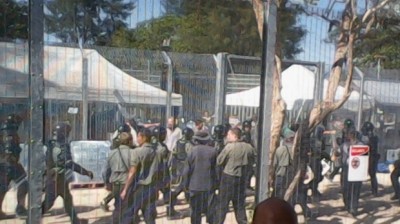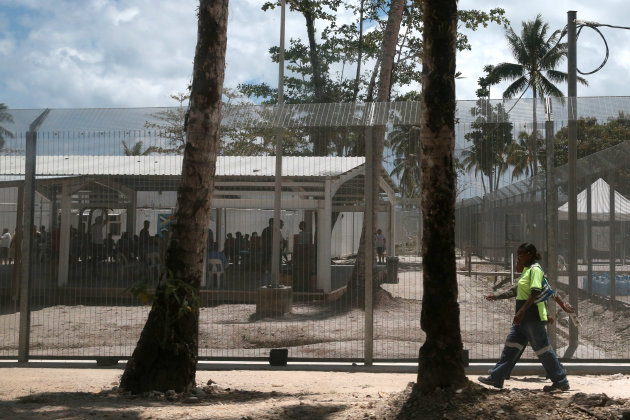A Nine-Year Obscenity: The Australia-NZ Resettlement Deal

All Global Research articles can be read in 51 languages by activating the “Translate Website” drop down menu on the top banner of our home page (Desktop version).
To receive Global Research’s Daily Newsletter (selected articles), click here.
Visit and follow us on Instagram, Twitter and Facebook. Feel free to repost and share widely Global Research articles.
***
Obscenities occupy the annals of State behaviour, revolting reminders about what governments can do. One of Australia’s most pronounced and undeniable obscenities is its continuing effort to gut and empty international refugee law of its relevant foundations. Instead of being treated as a scandal, populists and governments the world over have expressed admiration, even envy: If they can get away with that, what might we do?
Along the way, Australia has also made its greatest contribution to deterring unwanted arrivals, creating the most ruthless, tropical detention network for individuals who, unblessed by paperwork, arrive by boat with the aid of people traffickers and are duly told they will never settle in Australia. These “unlawful” arrivals – language itself in contravention of the UN Refugee Convention – are duly passed on the refugee camp conveyor belt, where they face ruination, despair and sadistic prison wardens. To Manus Island or Nauru they go, awaiting settlement in another country.
The Manus Regional Processing Centre on Los Negros Island Manus Province Papua New Guinea on Friday 11 September 2015. Photo: Andrew Meares
In 2013, New Zealand offered some mitigation to these ghastly conditions. Australia might have expressed no interest in resettling such arrivals, but New Zealand did. Thus, that great tradition of outsourcing obligations and responsibilities was continued, with Australia preferring to let others do the heavy lifting.
That agreement involved Australia’s neighbour accepting 150 of its annual intake of refugees from Australian detention centres. But the fall of the Labor government, and the coming to power of a conservative Coalition crazed by “turning back the boats”, all but killed the arrangement.
This did not stop other inglorious attempts on Canberra’s part to abdicate human rights responsibilities with the connivance of other countries. In 2014, a resettlement deal was struck with Cambodia costing in the order of AU$55 million. Unsurprisingly, only a few refugees availed themselves of this less than impressive arrangement. The next year, Australia tried, in vain, to coax the Philippines with an offer worth AU$150 million.
The 2016 agreement with the United States, hammered out in the last days of the Obama administration, was seen as a diplomatic coup, obliging Washington to take between 1,250 to 2,000 refugees. All would be subject to stringent US vetting. Australia, in turn, would accept a much smaller complement of refugees from Central America.
These arrangements, with much justification, were rubbished by the newly arrived President Donald J. Trump. In a now notorious phone call between Trump and Australian Prime Minister Malcolm Turnbull, the President suggested that this “stupid deal” might facilitate the import of terrorists into the United States.
“I do not want to have more San Bernadinos or World Trade Centres. I could name 30 others, but I do not have enough time.”
In another action that could only be seen as ingratiating, Australia agreed, in 2017, to resettle 17 Cubans who were found desperately clinging to a lighthouse off the Florida Keys. The pattern here should be obvious: Australia will do everything it can to evade, circumvent and subvert a refugee processing scheme that is humane and generous.
Under the current, revived understanding, New Zealand will accept 150 refugees from Australia each year for three years, but only those who are already in detention. Canberra has made it clear that the deal will not apply to those subsequently making an effort to travel to Australia by sea.
“Australia remains firm,” stated Home Affairs Minister Karen Andrews, “illegal maritime arrivals will not settle here permanently. Anyone who attempts to breach our borders will be turned back or sent to Nauru.”
Another nasty proviso is also applicable. Those refugees resettled in New Zealand will be looked at as a special category should they wish to enter Australia. According to the Australian Department of Home Affairs, they will be allowed “to apply for visas to enter Australia on a short-term or temporary stay basis only”. This would also apply even after the grant of New Zealand citizenship.
Government acceptance of this plan was only reached after what were described as “bullish” and “intimidating” negotiations between Australian Prime Minister Scott Morrison and non-government parliamentarians in 2019. Independent Tasmanian Senator Jacqui Lambie even claims that she was threatened with jail were she to reveal any details of the plan. “So, for the sake of humanity, I had no other choice but to shut up anyway to make sure that job was done.”
Lambie’s sense of humanity should not be exaggerated. Negotiations with the government centred on securing her support for the repeal of laws permitting the evacuation of gravely ill refugees to the Australian mainland for medical treatment. Compassion for refugees tends to be in short supply in the nation’s capital.
The opposition Labor Party, hardly a shining light in the refugee debates, have tried to make hay from the Morrison government’s change of heart.
“This is an absolutely humiliating backflip,” cheered Shadow Assistant Minister for Immigration, Andrew Giles. “It should not have taken nine years and that is the other big thought in my mind, the cost to those individual lives and the cost to all of us in this pointless, cruel intransigence by Mr Morrison.”
While Australian Labor mocked, New Zealand Immigration Minister Kris Faafoi was self-congratulatory and business-like of his country’s record. “New Zealand has a long and proud history of refugee resettlement and this arrangement is another example of how we are fulfilling our humanitarian international commitment.” In marketing speak, Faafoi expressed his pleasure that NZ could “provide resettlement outcomes for refugees who would otherwise have continued to face uncertain futures.”
While 450 refugees will find safety and sanctuary in New Zealand, that does little for 500 others. The beastly, cruel system remains in place, and promises to cost AU$2 billion next year. If anything, this revived agreement shows how far countries have pitifully fallen in their responsibilities in providing safety for the vulnerable and damaged.
*
Note to readers: Please click the share buttons above or below. Follow us on Instagram, Twitter and Facebook. Feel free to repost and share widely Global Research articles.
Dr. Binoy Kampmark was a Commonwealth Scholar at Selwyn College, Cambridge. He currently lectures at RMIT University. He is a regular contributor to Global Research and Asia-Pacific Research. Email: [email protected]


